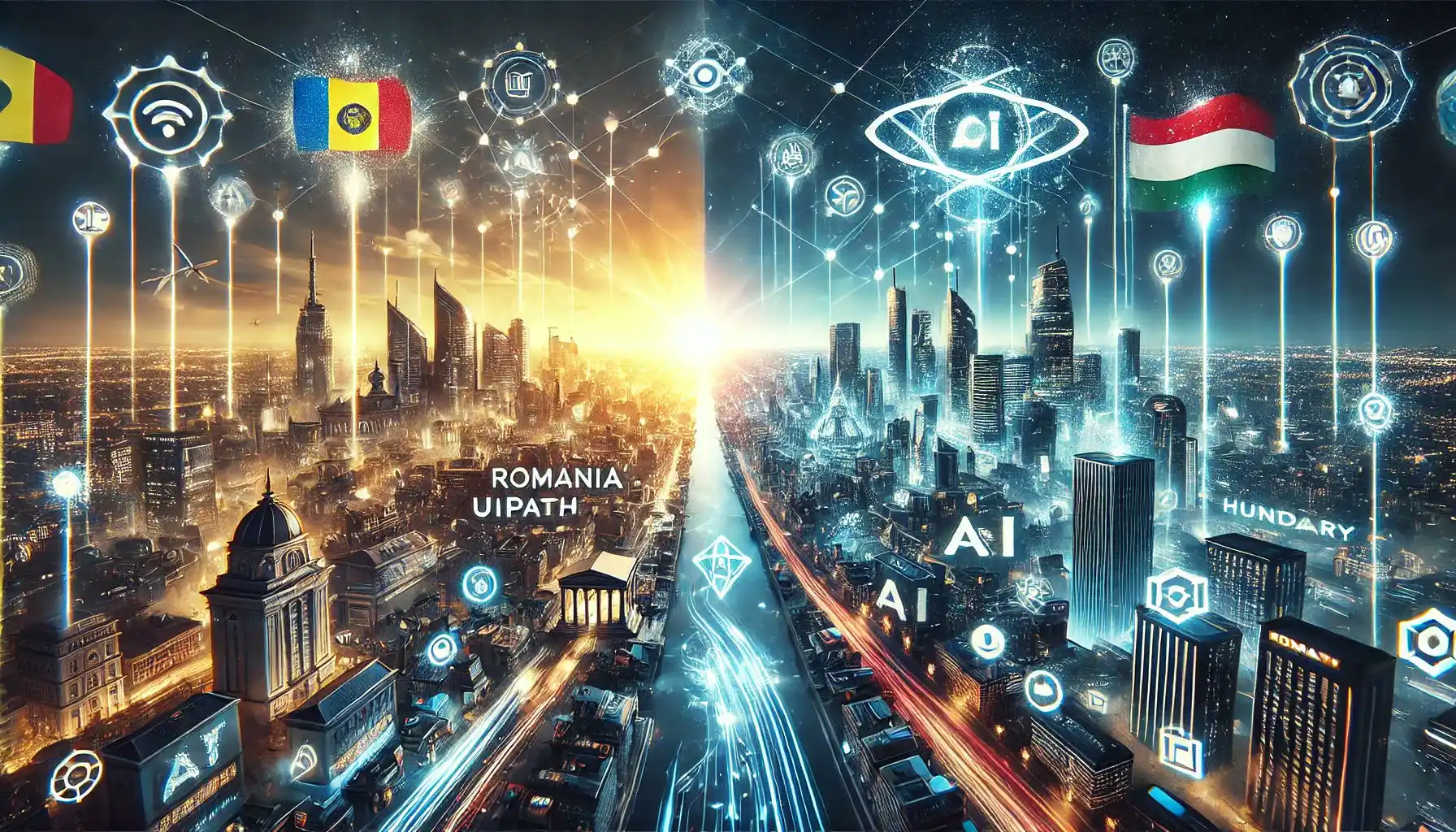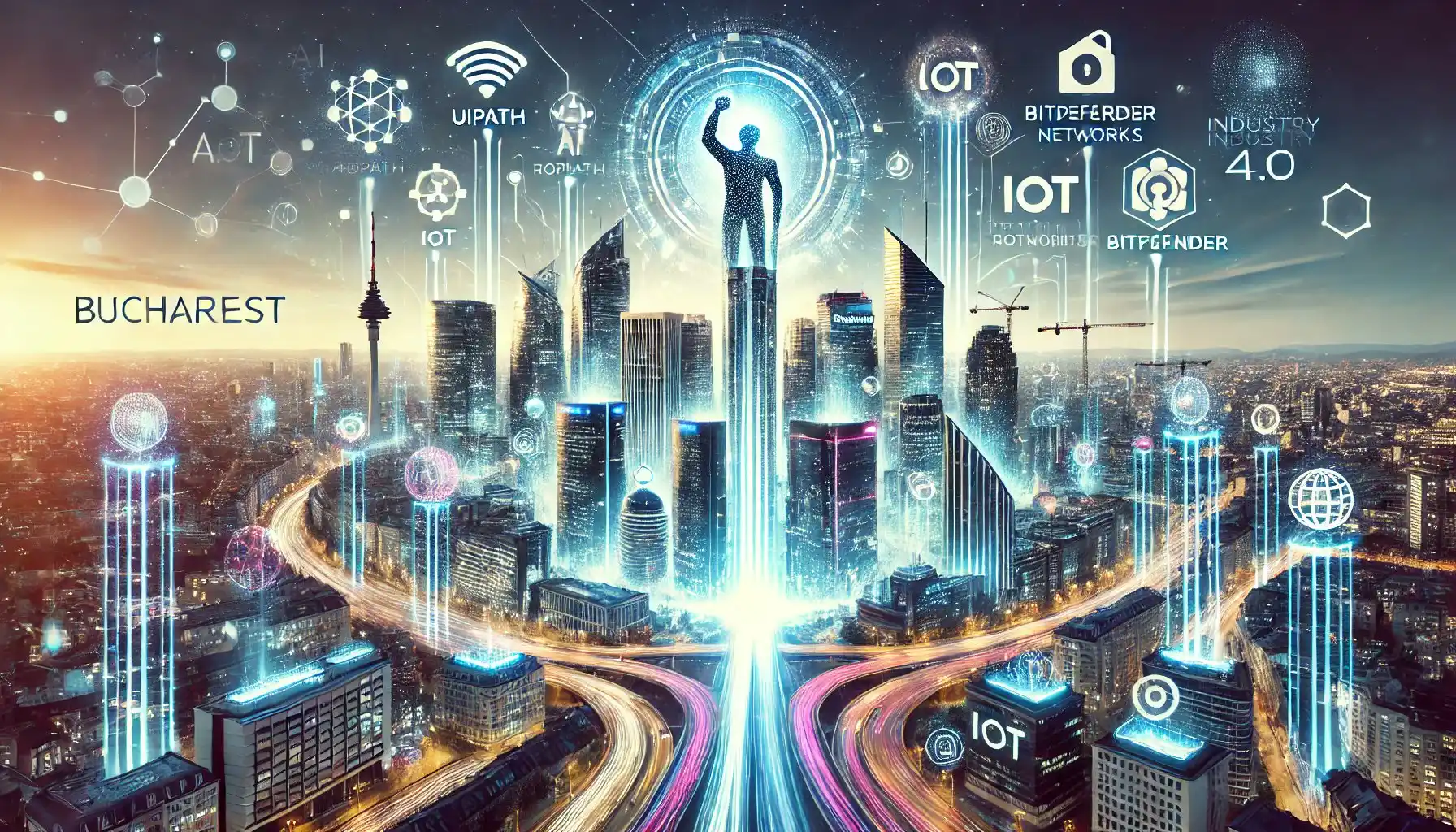@lorincze2020 “The wise Romanians, how many Nobel laureates do they have? The Hungarians have many!” https://x.com/lorincze2020/status/1855182833783865814
Abstract
This report provides a thorough and rigorous analysis of Romania and Hungary’s capabilities and positioning in the context of the Fourth Industrial Revolution (Industry 4.0), with a focus on Artificial Intelligence (AI). By synthesizing data from previous comparisons on STEM achievements, educational outputs, workforce statistics, technological ecosystems, and readiness for AI integration, we aim to determine which country is better positioned to leverage Industry 4.0. The analysis considers historical achievements, current capabilities, and future potential, providing a justified conclusion based on reliable data up to 2021.
Table of Contents
Introduction
Overview of the Fourth Industrial Revolution
Comparative Analysis Criteria
Historical STEM Achievements
4.1 Nobel Laureates and Global Recognitions
Current Educational Outputs and Quality
5.1 Quantity of STEM Graduates
5.2 Quality of STEM Education
Workforce Capabilities
6.1 STEM Workforce Size
6.2 Talent Pool in AI and Emerging Technologies
Research and Development Investment
7.1 R&D Expenditure
7.2 Scientific Output and Impact
Technological Ecosystems and Innovation
8.1 Tech Communities and Startup Ecosystems
8.2 Notable Tech Companies and AI Startups
Government Policies and Support for Industry 4.0
9.1 National AI Strategies
9.2 Support for Digital Transformation
Infrastructure and Integration with Global Networks
10.1 Digital Infrastructure
10.2 Global Collaborations and Partnerships
Challenges and Opportunities
Conclusion and Final Assessment
References
1. Introduction
The advent of the Fourth Industrial Revolution (Industry 4.0) is transforming industries worldwide through the integration of digital technologies such as AI, the Internet of Things (IoT), robotics, and big data analytics. This report examines Romania and Hungary’s readiness and potential to capitalize on these technological advancements. By analyzing historical data and current trends, we aim to provide a reliable assessment of which country is better positioned to leverage Industry 4.0.
2. Overview of the Fourth Industrial Revolution
Industry 4.0 represents a new era of innovation, where digital, physical, and biological systems converge. Key technologies include:
-
Artificial Intelligence (AI) and Machine Learning
-
Robotics and Automation
-
IoT and Connected Devices
-
Big Data and Analytics
-
Advanced Manufacturing and 3D Printing
Countries that effectively integrate these technologies into their economies are likely to experience significant economic growth, increased productivity, and enhanced global competitiveness.
3. Comparative Analysis Criteria
The analysis is based on the following criteria:
-
Historical STEM Achievements
-
Educational Outputs and Quality
-
Workforce Capabilities
-
Research and Development Investment
-
Technological Ecosystems and Innovation
-
Government Policies and Support
-
Infrastructure and Global Integration
-
Challenges and Opportunities
4. Historical STEM Achievements
4.1 Nobel Laureates and Global Recognitions
-
Hungary has produced several Nobel laureates in physics, chemistry, and medicine, reflecting a strong historical foundation in STEM fields.
-
Romania has fewer Nobel laureates, with George Emil Palade being a notable figure in medicine.
Assessment:
-
Advantage: Hungary
-
Implication: A strong historical foundation can inspire future generations but may not directly im.pact current Industry 4.0 readiness
5. Current Educational Outputs and Quality
5.1 Quantity of STEM Graduates
-
Romania produces a higher number of STEM graduates at both the Master’s and Ph.D. levels, with an estimated 30,000 – 35,000 Master’s and 5,000 – 6,000 Ph.D. graduates annually.
-
Hungary produces approximately 20,000 – 25,000 Master’s and 3,000 – 4,000 Ph.D. graduates in STEM fields annually.
Assessment:
-
Advantage: Romania
-
Implication: A larger pool of STEM graduates provides a workforce capable of driving technological innovation and adoption.
5.2 Quality of STEM Education
-
PISA Scores (2018): Hungary: Mathematics (481), Science (477) Romania: Mathematics (430), Science (426)
Assessment:
-
Advantage: Hungary
-
Implication: Higher pre-university education quality may lead to better-prepared students entering tertiary education.
6. Workforce Capabilities
6.1 STEM Workforce Size
-
Romania has over 200,000 practicing engineers and approximately 90,000 scientists and researchers.
-
Hungary has around 150,000 engineers and 70,000 scientists and researchers.
Assessment:
-
Advantage: Romania
-
Implication: A larger STEM workforce can accelerate the adoption and development of Industry 4.0 technologies.
6.2 Talent Pool in AI and Emerging Technologies
-
Romania has a significant number of IT professionals (over 150,000), many with expertise in AI, machine learning, and software development.
-
Hungary has around 100,000 IT professionals, with growing interest in AI but fewer specialized programs.
Assessment:
-
Advantage: Romania
-
Implication: A larger talent pool specialized in AI is critical for Industry 4.0 readiness.
7. Research and Development Investment
7.1 R&D Expenditure
-
Hungary invests approximately 1.5% of its GDP in R&D.
-
Romania invests around 0.5% of its GDP in R&D.
Assessment:
-
Advantage: Hungary
-
Implication: Higher R&D investment can lead to more innovation and technological advancements.
7.2 Scientific Output and Impact
-
Hungary produces more scientific publications per capita with higher citation impact.
-
Romania is increasing its scientific output but still lags behind Hungary in impact.
Assessment:
-
Advantage: Hungary
-
Implication: Greater research impact enhances the country’s reputation and can attract collaborations.
8. Technological Ecosystems and Innovation
8.1 Tech Communities and Startup Ecosystems
-
Romania has a vibrant tech community, especially in cities like Bucharest and Cluj-Napoca, with a strong startup ecosystem.
-
Hungary has an emerging tech scene centered in Budapest, with supportive government initiatives.
Assessment:
-
Advantage: Romania
-
Implication: A robust startup ecosystem fosters innovation and rapid adoption of new technologies.
8.2 Notable Tech Companies and AI Startups
-
Romania is home to UiPath, a global leader in robotic process automation (RPA), and other successful startups like Bitdefender (cybersecurity) and Elrond (blockchain).
-
Hungary has notable companies like AImotive (autonomous vehicles), Prezi, and LogMeIn.
Assessment:
-
Advantage: Romania
-
Implication: Presence of globally recognized AI companies indicates strong Industry 4.0 capabilities.
9. Government Policies and Support for Industry 4.0
9.1 National AI Strategies
-
Hungary implemented a National AI Strategy in 2020, outlining objectives for AI integration and establishing the Hungarian AI Coalition.
-
Romania was developing its National AI Strategy as of 2021, with active participation in EU AI initiatives.
Assessment:
-
Advantage: Hungary
-
Implication: A formalized strategy provides a roadmap for AI development and implementation.
9.2 Support for Digital Transformation
-
Hungary offers incentives and funding for digital transformation projects under programs like the Digital Success Programme 2.0.
-
Romania supports digital innovation through EU-funded projects but lacks comprehensive national initiatives.
Assessment:
-
Advantage: Hungary
-
Implication: Government support can accelerate Industry 4.0 adoption across sectors.
10. Infrastructure and Integration with Global Networks
10.1 Digital Infrastructure
-
Romania is known for its high-speed internet infrastructure, ranking among the fastest globally.
-
Hungary has advanced telecommunications networks but generally slower internet speeds compared to Romania.
Assessment:
-
Advantage: Romania
-
Implication: Superior digital infrastructure facilitates the deployment of Industry 4.0 technologies.
10.2 Global Collaborations and Partnerships
-
Romania hosts R&D centers for multinationals like Microsoft, Amazon, and Oracle, enhancing global integration.
-
Hungary has operations from companies like IBM and Microsoft, contributing to knowledge transfer.
Assessment:
-
Advantage: Romania
-
Implication: Strong global partnerships support technology transfer and innovation.
11. Challenges and Opportunities
Romania
-
Challenges: Lower R&D investment as a percentage of GDP. Brain drain due to emigration of skilled professionals.
-
Opportunities: Leverage successful tech companies to attract investment. Improve policy frameworks to support innovation and retain talent.
Hungary
-
Challenges: Smaller talent pool specialized in AI and emerging technologies. Brain drain and need to retain STEM professionals.
-
Opportunities: Utilize the National AI Strategy to build AI capabilities. Increase collaboration between academia and industry.
12. Conclusion and Final Assessment
Final Evaluation
-
Historical Achievements: Hungary has a stronger legacy in STEM, with more Nobel laureates and higher research impact.
-
Current Capabilities: Romania leads in the size of the STEM workforce, tech community, and AI talent pool. Hungary has higher R&D investment and established government strategies for AI.
-
Future Potential: Romania shows significant potential due to its vibrant startup ecosystem, successful AI companies, and superior digital infrastructure. Hungary has laid important groundwork with its national policies but needs to expand its talent pool and industry engagement.
Overall Winner:
-
Romania
Justification:
-
Workforce and Talent Pool: Romania’s larger STEM workforce and significant number of AI professionals position it well for Industry 4.0.
-
Technological Ecosystem: The success of companies like UiPath demonstrates Romania’s capacity to innovate and compete globally in AI.
-
Digital Infrastructure: High-speed internet and advanced digital infrastructure support the deployment of Industry 4.0 technologies.
-
Global Integration: Strong partnerships with multinational companies enhance technology transfer and integration into global markets.
-
Alignment with Industry 4.0: Romania’s strengths align closely with the key drivers of the Fourth Industrial Revolution, indicating a readiness to leverage these technologies effectively.
13. References
-
UNESCO Institute for Statistics (UIS)
-
OECD PISA 2018 Results
-
Eurostat
-
Scimago Journal & Country Rank
-
Global Innovation Index 2020
-
European Commission Reports
-
Hungarian Central Statistical Office (KSH)
-
National Institute of Statistics Romania (INSSE)
-
Company Reports: UiPath, AImotive, Prezi
-
Academic Databases: Scopus, Web of Science
-
Industry Analyses: Reports on AI and tech trends in Central and Eastern Europe
-
Government Websites: Hungarian AI Coalition: https://ai-hungary.com
Romanian Ministry of Communications and Information Society
Final Remarks
While both Romania and Hungary have notable strengths, the analysis concludes that Romania is better positioned to leverage Industry 4.0 technologies, particularly AI, due to its larger talent pool, successful tech industry, superior digital infrastructure, and global integration.
Recommendations:
-
For Romania: Finalize and implement a comprehensive National AI Strategy. Increase R&D investment to enhance research impact. Implement policies to retain talent and reduce brain drain.
-
For Hungary: Expand AI educational programs to grow the talent pool. Foster industry-academia collaborations to stimulate innovation. Provide incentives to tech startups and support their integration into global markets.
By addressing their respective challenges and capitalizing on opportunities, both countries can enhance their competitiveness in the global landscape of the Fourth Industrial Revolution.



‘Fix the broken countries of the west through increased transparency, design and professional skills. Support Skills Gap Trainer.’
To see our Donate Page, click https://skillsgaptrainer.com/donate
To see our YouTube Channel, click https://www.youtube.com/@skillsgaptrainer